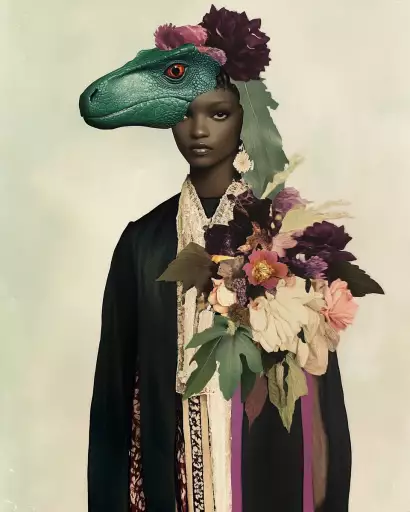Explore the Best AI Image Gallery

Beyond the Brush: AI-Generated Media and the Evolving Creative Landscape
The creative world is undergoing a seismic shift, propelled by the rise of artificial intelligence (AI). AI-generated media, encompassing everything from text and music to images and videos, is blurring the lines between human and machine creativity, sparking both excitement and apprehension. This new frontier presents unprecedented opportunities for artists, designers, and storytellers, while also raising crucial ethical considerations that demand careful navigation.
Unveiling the Potential: AI as a Creative Tool
AI algorithms are capable of learning patterns and generating novel content based on vast datasets. This opens up a realm of possibilities for creators:
- Enhanced Efficiency: AI can automate repetitive tasks, freeing up human artists to focus on conceptualization and higher-level creative decisions.
- Novel Content Generation: AI can generate unique ideas, designs, and artistic expressions that might not have been conceived by humans alone.
- Personalized Experiences: AI can tailor content to individual preferences, creating immersive and interactive experiences.
From Art to Advertising: Applications Across Industries
The impact of AI-generated media extends far beyond the realm of fine art. Its transforming various industries:
- Advertising and Marketing: AI can create personalized ad campaigns, generate engaging video content, and analyze consumer trends.
- Entertainment: AI is being used to develop interactive narratives, compose music, and even create realistic CGI characters.
- Education: AI-powered tools can personalize learning experiences, generate interactive educational content, and provide real-time feedback.
Navigating the Ethical Labyrinth
The rise of AI-generated media also presents significant ethical challenges:
- Copyright and Ownership: Who owns the copyright to AI-generated content? The programmer, the user, or the AI itself?
- Bias and Discrimination: AI algorithms can inherit biases from the data they are trained on, leading to potentially discriminatory outputs.
- Job Displacement: Automation powered by AI could lead to job losses in creative industries.
- Authenticity and Trust: How can we distinguish between human-created and AI-generated content?
Shaping the Future: Responsible Innovation
As AI continues to evolve, its crucial to foster responsible innovation in the field of AI-generated media:
- Transparent Algorithms: Develop and utilize AI algorithms that are transparent and explainable.
- Diverse Datasets: Train AI models on diverse and representative datasets to mitigate bias.
- Human Oversight: Ensure human oversight in the creative process to maintain artistic integrity and ethical considerations.
- Education and Awareness: Promote public understanding of AI and its implications for the creative industry.
Conclusion
AI-generated media is poised to revolutionize the creative landscape, offering exciting possibilities while presenting complex ethical challenges. By embracing responsible innovation, fostering transparency, and prioritizing human values, we can harness the power of AI to enhance creativity, empower artists, and shape a future where technology and art converge in harmonious collaboration.